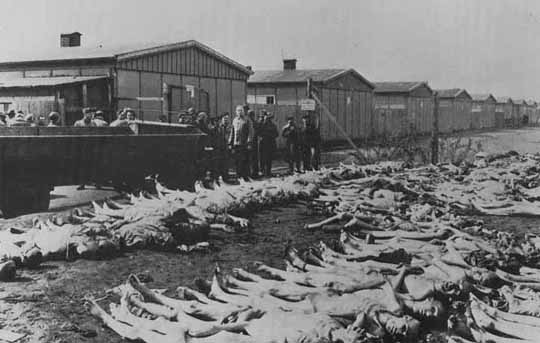
Towards the end of the war, conditions at allthe Nazi concentration camps throughout Germany had worsened asAllied bombing destroyed supply lines for food and medicine. Accordingto Marcus J. Smith in his book "The Harrowing of Hell"there were 54 recorded deaths at Dachau in January 1944 and inFebruary 1944, there were 101 reported deaths. By 1945, thesenumbers had increased dramatically. In January 1945, there were2,888 deaths at Dachau and 3,977 deaths in February 1945. By thetime the American liberators reached the Dachau camp, there wasno more coal left to stoke the crematory and bodies had been leftlying on the ground. Their clothing had been removed and givento still living prisoners. There was a typhus epidemic ragingand 900 prisoners at Dachau were dying of the disease when theliberators arrived, according to the account of Marcus J. Smith.He wrote that eleven of the barracks buildings at the Dachau camphad been converted into a hospital to house the 4,205 sick prisoners.Another 3,866 prisoners were bed ridden. He put the total numberof survivors at around 32,600, but said that between 100 and 200a day were still dying after the camp was liberated. He mentionedthat the American Army tried to keep the freed prisoners in thecamp to prevent the typhus epidemic from spreading throughoutthe country.This is a U.S. Army photograph which hangs in theMuseum exhibit; Michael Selzer wrote in "Deliverance Day"that it was taken on May 4, 1945. It was very cold and there hadbeen snow flurries as late as May 1, according to his account.